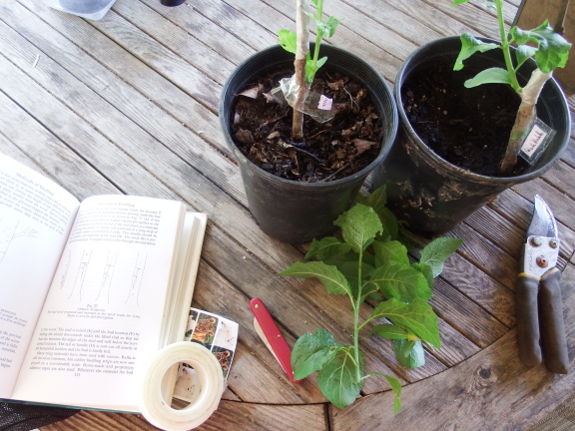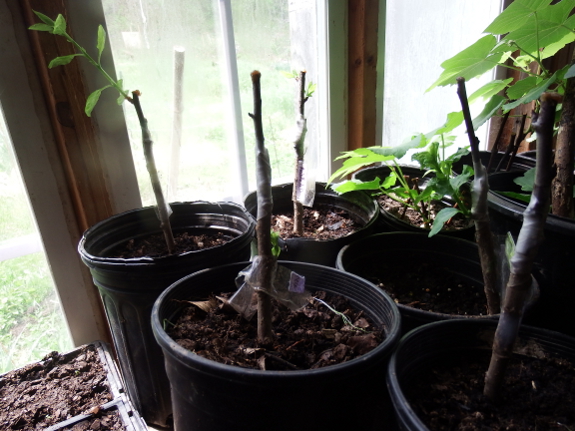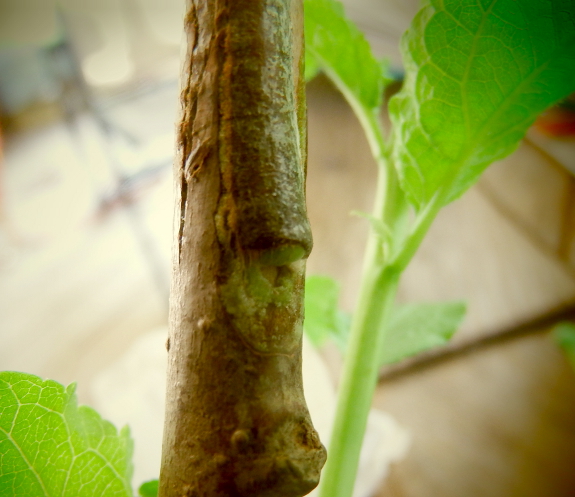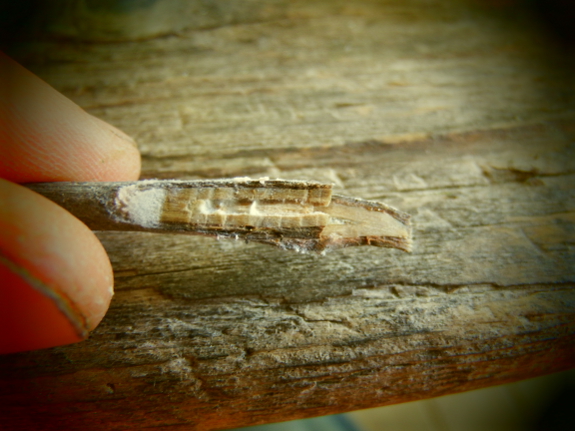
Dismantling a failed graft

Grafting plums using dormant scionwood and rootstock
is not usually recommended, so I was much heartened when two of my five
grafts took immediately and sent vigorous shoots up from the scionwood.
Of the other three rootstock/scionwood combinations, I was willing to
give one plant a little more time to make up its mind since the
scionwood looked good  and
there were no sprouts yet from the rootstock either. But I assumed that
the grafts on the last two plants had failed. After all, the plants in
question were growing from the rootstock and the scionwood didn't look
particularly promising.
and
there were no sprouts yet from the rootstock either. But I assumed that
the grafts on the last two plants had failed. After all, the plants in
question were growing from the rootstock and the scionwood didn't look
particularly promising.
You may recall that the purpose of this experiment was to save two plum trees who were flattened by snow falling off the barn roof last winter.
Of those trees, one perished...but luckily the deceased was the same
variety as one of my successful grafts! The second tree is alive
(although not thriving), so I decided to try budding active growth from
that variety onto two of my failed rootstocks.

But imagine my surprise
when I removed the parafilm from one of the "failed" grafts and saw the
above. That green stuff growing between rootstock and scionwood...could
that be cambium beginning to join the two pieces of wood together? I'm
not positive, but decided it wouldn't hurt to give the tree a little
more time to get its act together. So I rewrapped the graft, plucked off
the rootstock sprout (to give the plant notice that it needed to sprout
from the scionwood) and set it back in the low light of our living
room.

The second failed graft,
though, was truly failed. The scionwood came right out and there appears
to be no life (green) left in the wood. Time to try again with
budding...in tomorrow's post!
Want more in-depth information? Browse through our books.
Or explore more posts by date or by subject.
About us: Anna Hess and Mark Hamilton spent over a decade living self-sufficiently in the mountains of Virginia before moving north to start over from scratch in the foothills of Ohio. They've experimented with permaculture, no-till gardening, trailersteading, home-based microbusinesses and much more, writing about their adventures in both blogs and books.
Want to be notified when new comments are posted on this page? Click on the RSS button after you add a comment to subscribe to the comment feed, or simply check the box beside "email replies to me" while writing your comment.
